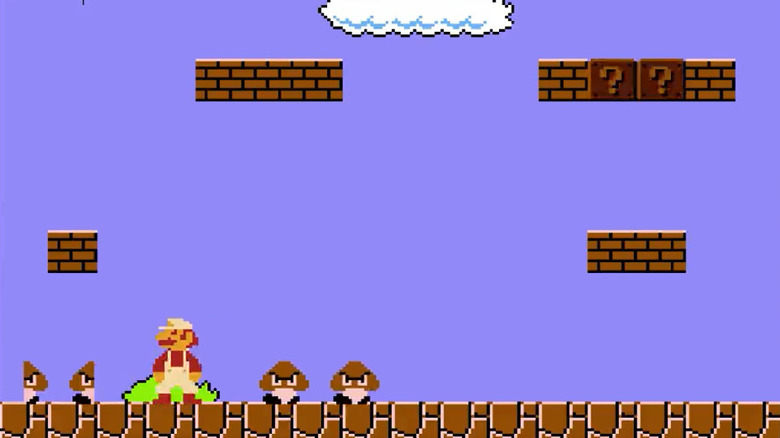This Is Why Your Old NES Games Flickered
The NES was notoriously sensitive and prone to glitches, with the American version even boasting a major design flaw. Plenty of gamers got frustrated when they lost their progress because someone bumped the surface the console rested on. Most suffered the despair of not having the opportunity to play a title at all because the NES simply wouldn't read the cartridge. Talk to anyone who gamed in the '80s and '90s and you'll hear numerous stories like this.
Interestingly, one of the more recognizable "glitches" of the NES wasn't a glitch at all. Those who played on the NES may have noticed that the games tended to flicker. Enemies, bits of scenery, and even player characters sometimes seemed to grow dimmer or lightly flash. A gamer at the time could be forgiven for assuming this was just another bug but, as it turns out, developers actually programmed this flicker into games for a reason.
Developers used NES flicker to compensate for the console's limits
As game developer Matt Hughson explained on Twitter, the NES flicker had to be programmed into games to ensure all the objects would consistently appear on the screen. Due to the limits of hardware, "The NES can only display 8 sprites per horizontal line of the screen." Sprites are 2D images used to create larger pictures and an object on screen would be composed of multiple sprites (per Giant Bomb). Once eight sprites had been drawn on a line, any other sprites on that line would simply not be displayed.
This could mean that some objects would use up all the sprites on the screen, leaving others invisible. The only way to avoid this was to ensure that no individual object used up all the sprites at a given instant. To achieve this, it was necessary to program games to continuously switch which sprites were drawn and which were left out for every screen. The result was that, as frames cycled, different sprites would disappear and reappear. At full speed, it looked to the human eye as if objects were flickering.
Another game developer, Mario Nesrocks, has developed a program that shows what a NES game would look like with and without this flickering. With flickering, all characters remain at least partially visible. Without, some characters remain invisible until other characters move and stop using up sprites. While the NES flicker was annoying, it was a vital part of keeping games of the era playable. Further, it speaks to the ingenuity of programmers of the day who managed to craft some iconic titles on primitive technology.


